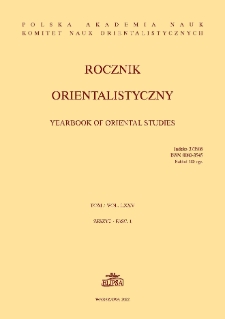Between the lines of the Ḥafṣ and Warš readings of the Qur’an. The Qur’an as a literary testimony to its meanings
Between the lines of the Ḥafṣ and Warš readings of the Qur’an. The Qur’an as a literary testimony to its meanings
Author(s): Marcin GrodzkiSubject(s): Studies of Literature, Sociology of Religion
Published by: Wydział I Nauk Humanistycznych i Społecznych Polskiej Akademii Nauk
Keywords: Qur’an; Qur’anic studies; Ibn Mujahid; qirā’āt; Ḥafṣ ʿan ʿĀṣim; Warš ʿan Nāfiʿ; early Islam; Qur’anic History; recitation styles; text criticism
Summary/Abstract: The paper exemplifies chosen textual variants extant in Qur’an versions in the Islamic world, focusing on printed readings according to Ḥafṣ ʿan ʿĀṣim and Warš ʿan Nāfiʿ, against the historical background of Ibn Muǧāhid’s qirā’āt reform (10th century C.E.). The studied issue is part of and sheds light on a broader problem - the quest after elaborating a critical text edition of the Qur’anic text based on the oldest and best manuscripts. The preliminary conclusion is that neither Ibn Muǧāhid nor the oldest, surviving works by Muslim scholars devoted to the Qur’anic qirā’āt did actually record the factual state of the oral tradition from the 7th century, but that the variants of the oral tradition as codified in the 10th century have their origin only in the late written tradition (probably also only from the 10th century, possibly not much older).
Journal: Rocznik Orientalistyczny
- Issue Year: 75/2022
- Issue No: 1
- Page Range: 31-41
- Page Count: 11
- Language: English

